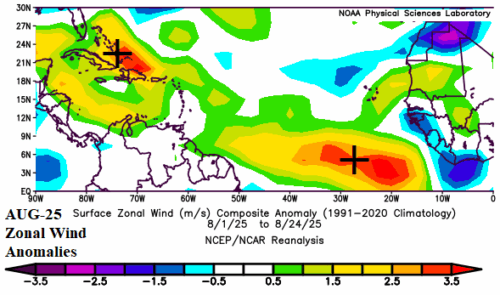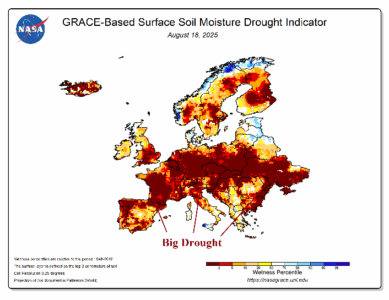Other than Erin, the 2025 season has been quiet so far. However, during the 2016-24 active period, after September 1 is typically quite active featuring 7 hurricanes and 3 intense hurricanes. As September 2025 approaches, the North Atlantic basin is warmer than normal but arguably the least warm since 2015. Previously, 2018 produced least warm North Atlantic basin SSTA during September when peak tropical cyclone activity occurs. However, in 2018 a weak La Nina was forming and in 2025, signs of a weak La Nina are ahead. Therefore, despite the less warm North Atlantic, the La Nina tendency should produce a favorable atmospheric environment for tropical cyclone development during SEP/OCT/NOV 2025.




